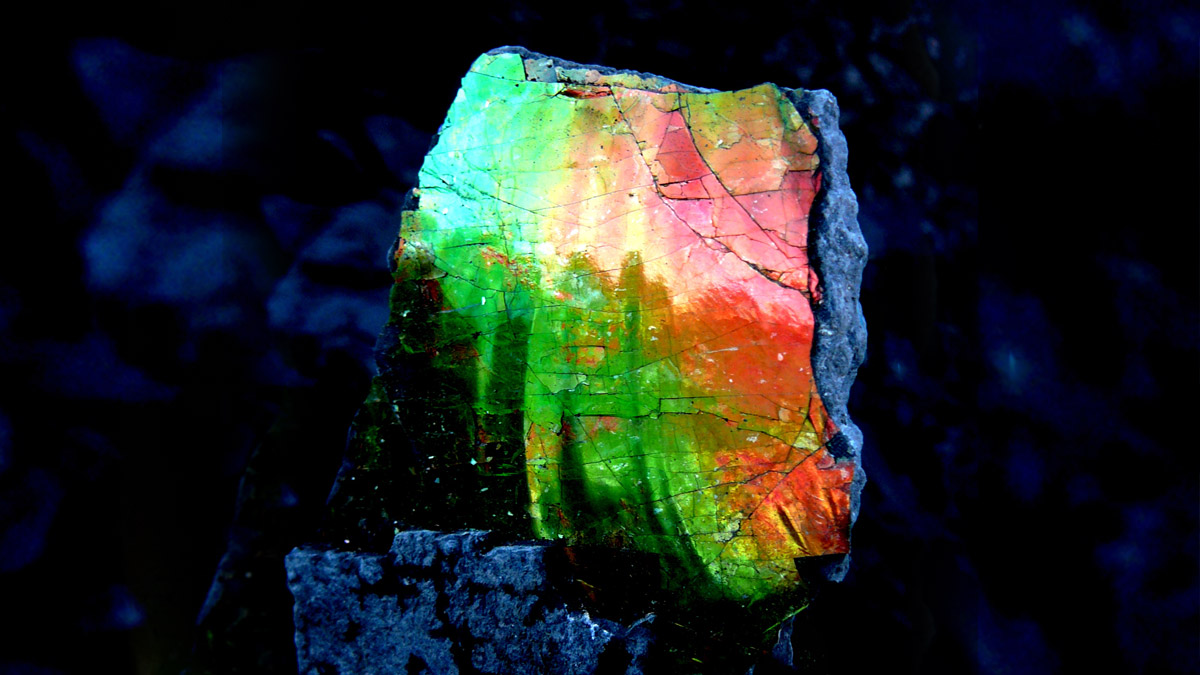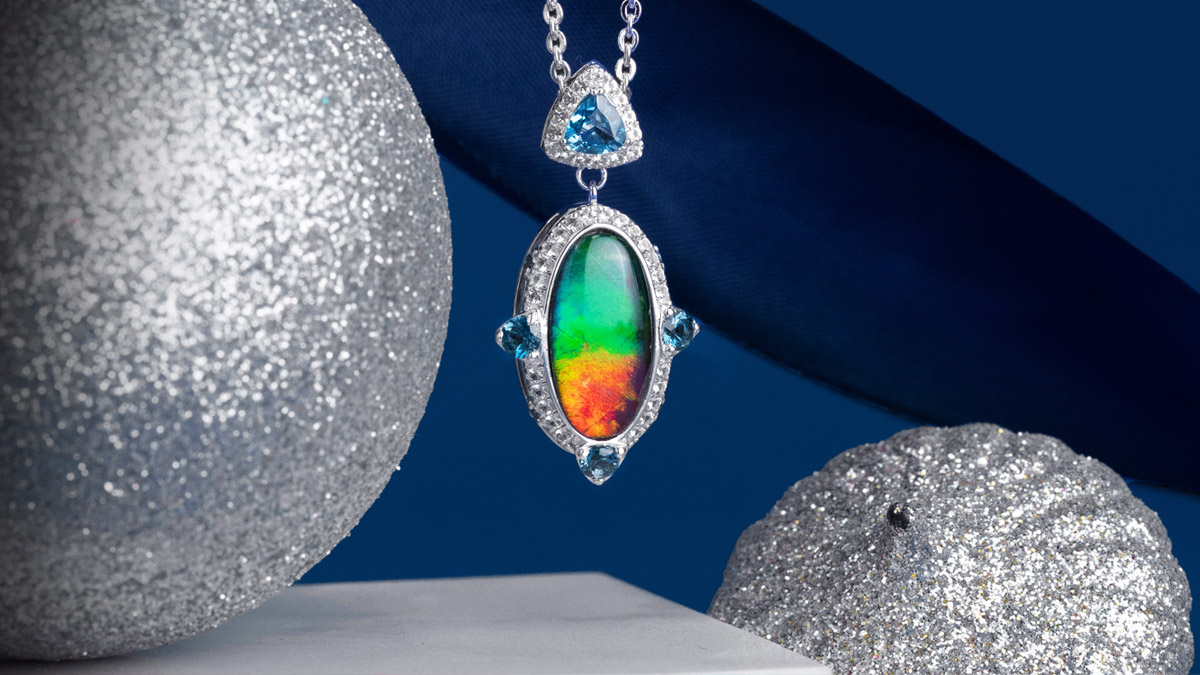Menu
Close
Ammolite is a fascinating gemstone that is known for its stunning and iridescent colours. It is made from the fossilised shells of ancient ammonites, which are extinct marine creatures that lived over 70 million years ago. While ammolite is found in a range of colors, its unique iridescence sets it apart from other gemstones. In this article, we will explore the colors of ammolite and how they are derived.

Ammolite Colors
Ammolite displays a range of colors, including green, red, orange, yellow, and blue, as well as many shades in between. The colors of ammolite are derived from the thin layers of aragonite that make up the gemstone. These layers can be extremely thin, sometimes measuring only a few microns thick. When light passes through these layers, it is refracted and reflected, creating the stunning iridescent colors that ammolite is known for.
The colors of ammolite can change depending on the angle of light and the viewing angle. This is known as the play of color, and it is what makes ammolite such a unique and fascinating gemstone. The play of color is created by the interference of light waves as they pass through the thin layers of aragonite.
How the Colors are Derived
The colors of ammolite are derived from a number of factors, including the thickness of the aragonite layers, the angle of the light, and the viewing angle. The colors are created by the interaction of light waves as they pass through the thin layers of aragonite.
As light waves pass through the layers of aragonite, they are refracted and reflected, creating a range of colors. When the layers are thick and well-defined, the colors will be more intense and distinct. When the layers are thin and less well-defined, the colors will be more muted and less distinct.
The angle of the light and the viewing angle also play a role in the colors of ammolite. When the light hits the gemstone at a certain angle, it can create a specific color or pattern. When the viewing angle is changed, the colors and patterns will also change. This makes ammolite a highly dynamic and fascinating gemstone to view and study.

Red and Green
Red and green are some of the most common colors found in ammolite. These colors are caused by the presence of iron and other minerals in the stone. Red ammolite is often considered to be the most valuable and sought-after, while green is also highly prized for its beauty and unique characteristics.
Blue and Purple
Blue and purple ammolite are rarer than red and green, and are highly sought after by collectors and jewelry enthusiasts. These colors are caused by the presence of copper and other minerals in the stone, and can range from deep, rich hues to soft, pastel shades.
Yellow and Orange
Yellow and orange ammolite are also highly prized for their unique beauty and vibrancy. These colors are caused by the presence of magnesium and other minerals in the stone, and can range from bright, sunny yellows to deep, fiery oranges.
Black and Brown
Black and brown ammolite are less common than other colors, but are still highly prized for their unique characteristics and beauty. These colors are caused by the presence of carbon and other minerals in the stone, and can range from deep, dark browns to almost black.
Value and Appeal
The value and appeal of ammolite can be greatly affected by its color variation. Red and green ammolite are generally considered to be the most valuable, with blue and purple following closely behind. Yellow and orange are also highly prized for their unique beauty and vibrancy.
In addition to color, the pattern and intensity of the iridescence can also affect the value and appeal of ammolite. Gemstones with a strong, vibrant iridescence and unique patterns are generally more sought after and valuable than those with a weaker or less vibrant iridescence.

Conclusion
In conclusion, ammolite is a unique and stunning gemstone with a wide range of colors and patterns. Its vibrant hues and iridescence make it a popular choice for jewelry and decorative objects. The value and appeal of ammolite can be greatly affected by its color variation, with red and green generally considered to be the most valuable. However, all colors of ammolite have their own unique beauty and characteristics, making it a highly prized gemstone in the world of jewelry and gemstones.